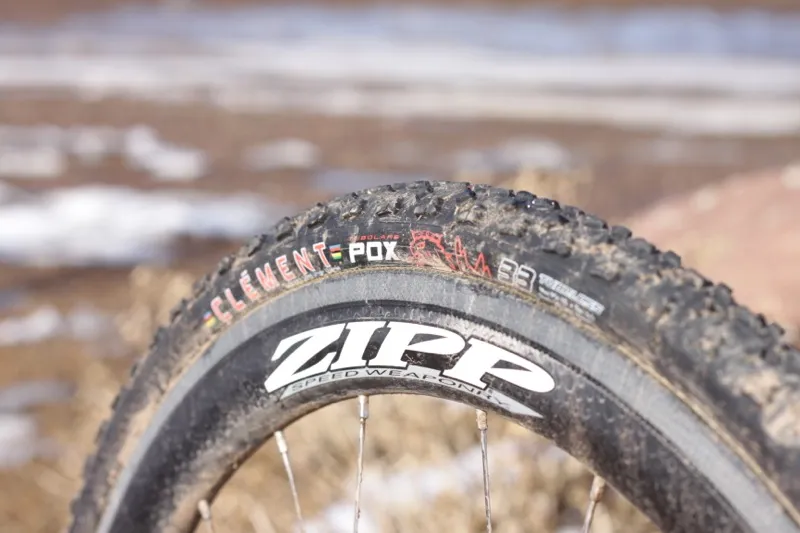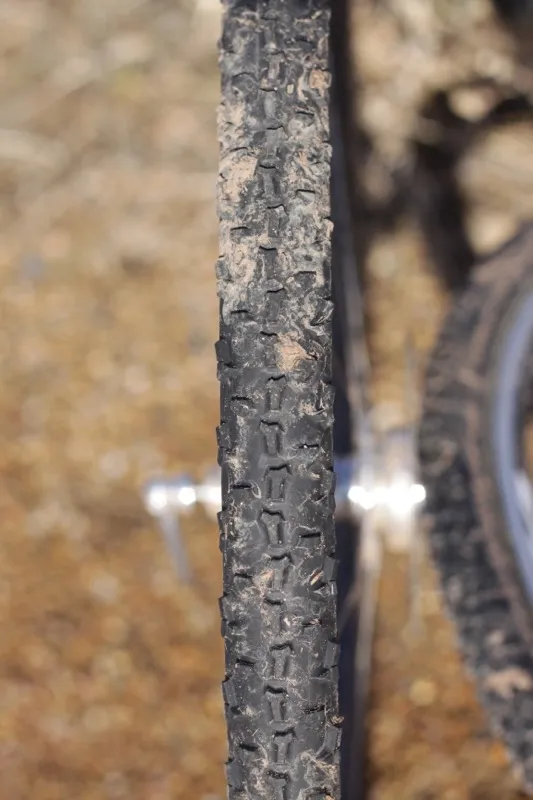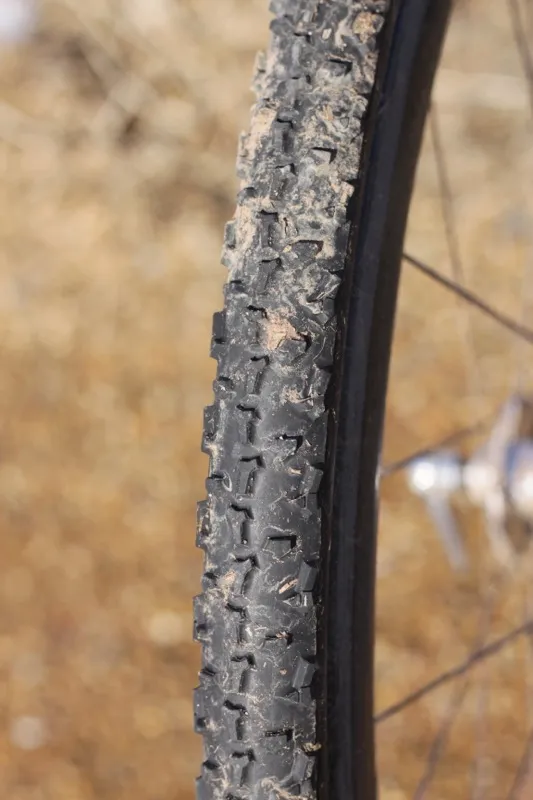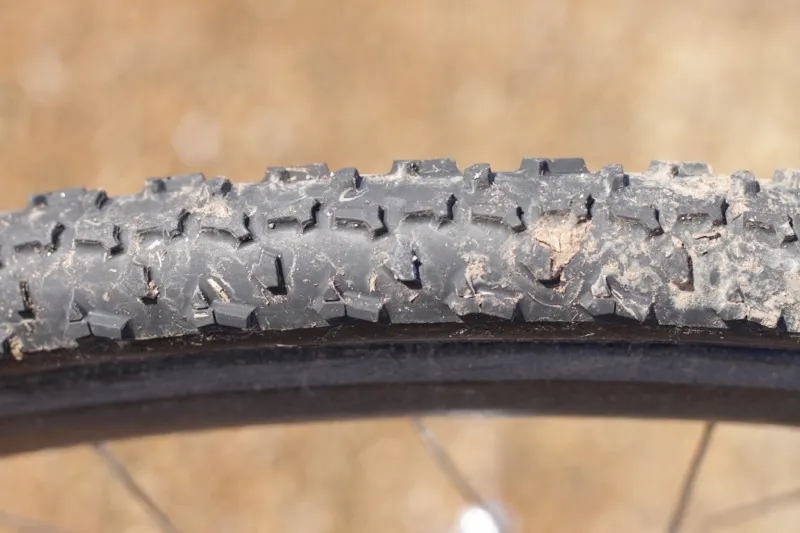Clément's PDX has a buzz surrounding it. The clincher version is already a top choice for muddy cyclo-cross races and the new tubular offers even more grip – so long as you run low air pressures.
Ride & handling: Excellent drive and cornering grip, but only if you learn the pressures
The first time we raced on the PDXs we found that although drive traction was quite good, cornering traction fell short of that provided by the best of the competition. Despite the Clément tires' tubeless design, they didn't seem to offer as supple a ride through rutted sections as their latex tubed rivals when run at the same pressures (23.5psi front/24.5psi rear), so we decided to try going lower.
After some experimentation we settled on 21psi front and 22.5psi rear, and this allowed the tires to shine. Despite pushing the bike very hard at high speeds, the casings never folded or rolled (our tester's 140lb weight and wide Zipp 303 Firecrest rims likely both helped with this). We were able to charge through polished and icy off-camber sections, and clear muddy run-ups lap after lap.
The PDX proved to be an excellent mud tire, so long as you know how to adjust its pressure for the course – go low, real low. It also proved very capable on dry and dusty courses. In fact, its tubeless construction and aggressive tread made it a go-to tire for the type of sharp and punishing Colorado courses that can shred artisan-made cotton tires in a lap or two.
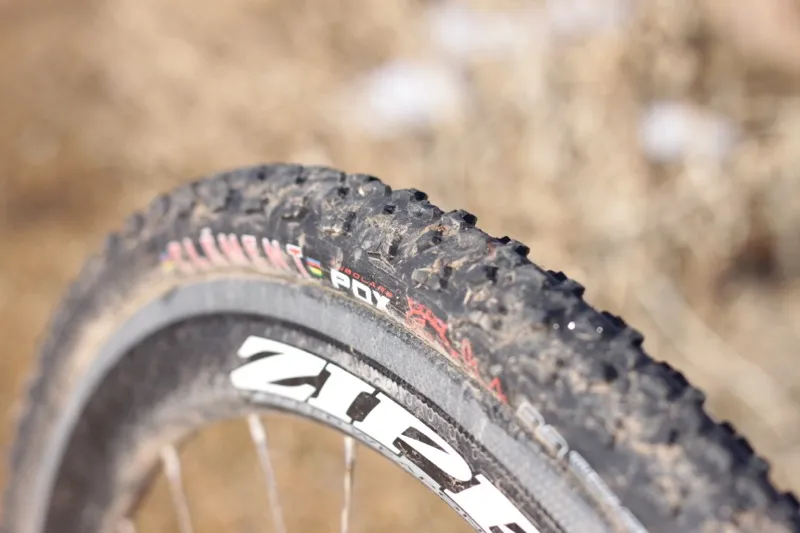
The PDX is a mud tire through and through; at the right pressure it deals well with all types
This makes it a good choice for less technically proficient riders or mountain bikers used to tires with bite. It's still a mud tire though, so for dry conditions use we’d recommend pairing a front PDX with something that rolls a bit faster at the rear.
Construction: Supremely straight, ultimately durable, and more easily repairable
The PDX isn't quite as supple as an artisan-made, latex tubed cotton tire but its on-course performance is very close. In fact, we believe it can compete with the best mud tires on the market. But that isn’t the whole story.
The tire has other advantages, which may not matter to the pros but will be of importance for riders looking at paying US$129.99 per end. Made for Clément by Tufo, the PDX has a machine-like build quality which lends itself to more consistent and straighter mounting than a traditionally made tubular. It's also more durable and more easily repairable.
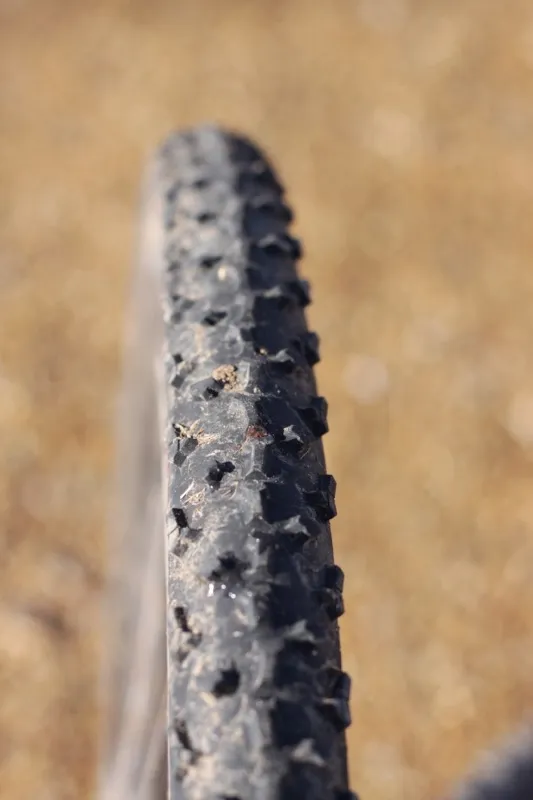
Our two PDX test tires mounted very straight
Out of the box, the PDX casing seems very round and uniform. This is because the seam is oriented under the tread, rather than under the base tape. The tire's construction and shape makes rim choice important. It's wide and flat through the base tape and mounting area, which makes it hard to mount on rims with deep, narrow, V-style tire beds.
However, the Clément mounts to wider rims – Zipp 303, HED Ardennes, new Bontrager D3 – exceptionally well. The sidewalls are synthetic and pre-coated for water and cut resistance, and even after a season of racing on dry, sharp courses our tires look no worse for wear.
Finally, because of the PDX's tubeless construction, punctures can be repaired easily with sealant. Clément will offer two branded sealants made by Tufo, Caffelatex and Stan's NoTubes should work just as well, and Tufo make an extreme sealant that’s meant to fix larger holes permanently. This gives the PDX the possibility of a longer life than any other tubular out there – save for other Tufos, of course.
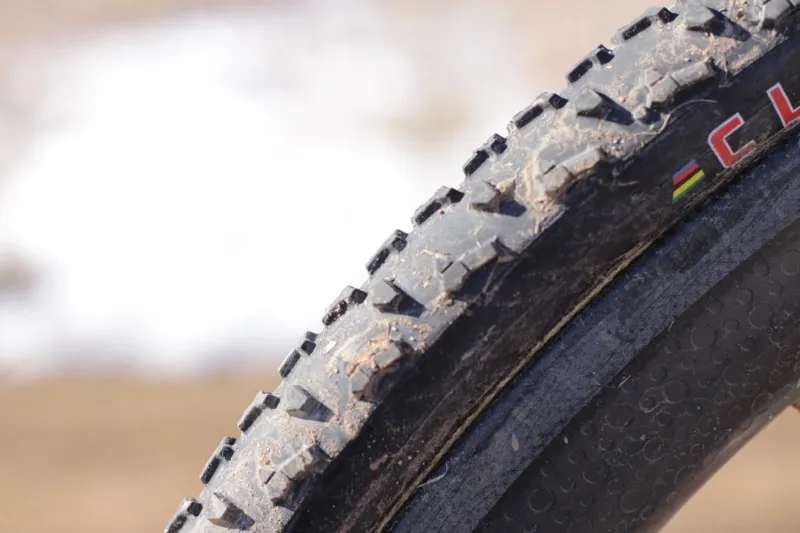
In profile, the 2mm-tall center tread shows its teeth
How we tested...
There's no way to test a mud-specific cyclo-cross tire other than by racing it on a muddy track. Simply riding it in the mud doesn't suffice because a beat-in mud track is unique – some spots are sloggy and churned up, others are super-greasy, and still others are polished slick. The PDX's first true test was Cross of the North at The Ranch in Loveland, Colorado.
Through the course of the hour-long elite race we continuously changed between three bikes, each of which was fitted with a different pair of tires – one of them the sport’s Dutch-made gold standard. The course had just about every condition a tester could hope for: deep mud that packed up heavily; hidden frozen ruts under soupy mud; slick grass; packed snow; and polished frozen ice-mud. After six bike changes, we came away with a victory and some interesting results: the PDX works as well as any other mud tire currently on the market, but only if you take the time to adjust the pressure. We also found that the stiffer tubeless casing requires considerably less pressure than a latex tubed tire—on the order of 1- to 2psi less.
Unable to load media
Mud tire testing at ’Cross of the North, credit: Brian Patrick, OnSight Media
Armed with this precious experience, we packed up our freshly power-washed PDXs for a second day of testing at Boulder Racing’s Lyons High School series finals. We faced a deeper field on a markedly different course that was punctuated with ultra slick polished ice, treacherous shaded off-cambers and much thinner mud. The course was as slick, if not more so, but the mud wasn’t packing like the previous day.
We had one mishap when we slid out on a grassy off-camber, but this was more a case of us trusting and committing too much rather than the tires letting us down. This was very impressive, considering we were taking chances to make up for a lack of fitness following illness, and the faster field. In the lead-up to this excellent weekend of mud testing, we rode the PDX on multiple dry and dusty courses.
